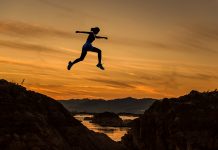Today starts a series of challenges that will engage you in some “Visual Exercise”:
We will start by learning how to “see the light” the way a camera sees the light.
Important tip for ethnographic video and photography: there is no such thing as “bad” light. Light – any light – can be a tool to tell your story.
- Natural light is the most powerful tool we have.
- Harsh mid-day light is not “bad” light.
- Golden hour does => more vibrant colors and softer light
- Photos don’t need to be beautiful to be powerful
- There is no good or bad light.
- Each type of light can convey different things
Types of Light:
- Golden Hour Light: Sunrise/Sunset: Great for making things beautiful with golden tint.
- Can also be used to create a sense of drama by using dramatic shadows
- Harsh Midday Light: Great for showing hardship or tough living conditions
- Show raw, gritty, unfiltered reality
- Shows textures and wrinkles prominently
- Scenery can look beautiful, but with a rough edge
- Overcast: Flat and Neutral. Little emotional impact on its own.
- Slight grayish tint if any tint at all.
- Make the weather a character.
- Or shoot characters in themselves that do not need any fancy lighting
- Or shoot actions
- Or melancholy
- Twilight: Tends toward a blue tint (or pink, purple, orange if near sunset)
- Blue = mystique
- Purple, orange, pink = magical and awe-inspiring
- Darker stages of twilight minimize detail. Great for poetic silhouettes.
- Fog: very soft light, atmospheric with a strong sense of mood
- Lose detail as you move further away – which can be very evocative
- Consider making the fog a character
- Early morning light on fog can be magical
- Light as the driving force of the photo
- Sometimes the light is the main character
- Especially when it interacts with elements like smoke, water and dust
Get Mitchel K’s full guide here.
And don’t forget to play:
Coming up on Thursday: Tech tips on how to shoot in different types of light.
Seeing the Light 10 Shot Challenge
Try to capture an example of each of the 10 shots below (all in video, not photos). These are each very challenging in their own way and will require that you know your equipment and understand how your camera “sees” the light. Edit them together into a 10 shot sequence. It doesn’t have to be a story or a scene, but great practice in storytelling if you can think of something and make it work!
Also, if you can get shots that will work for your final project, go for it!
- Evenly lit face in full sun (noon or early afternoon)
- Bright sun portrait with de-focused background
- Backlit Golden hour Portrait
- Unstaged Silhouette
- Sunburst (sun stars) and/or light leaks video
- Clean (no grain) low-light indoor video (night scene indoors)
- Night portrait with bokeh background
- Night landscape with no grain. Everything in focus.
- Soft light night portrait/interview on the street
- One creative use of Lume Cube
Remember to submit a reflection about what you learned when you submit your video.



